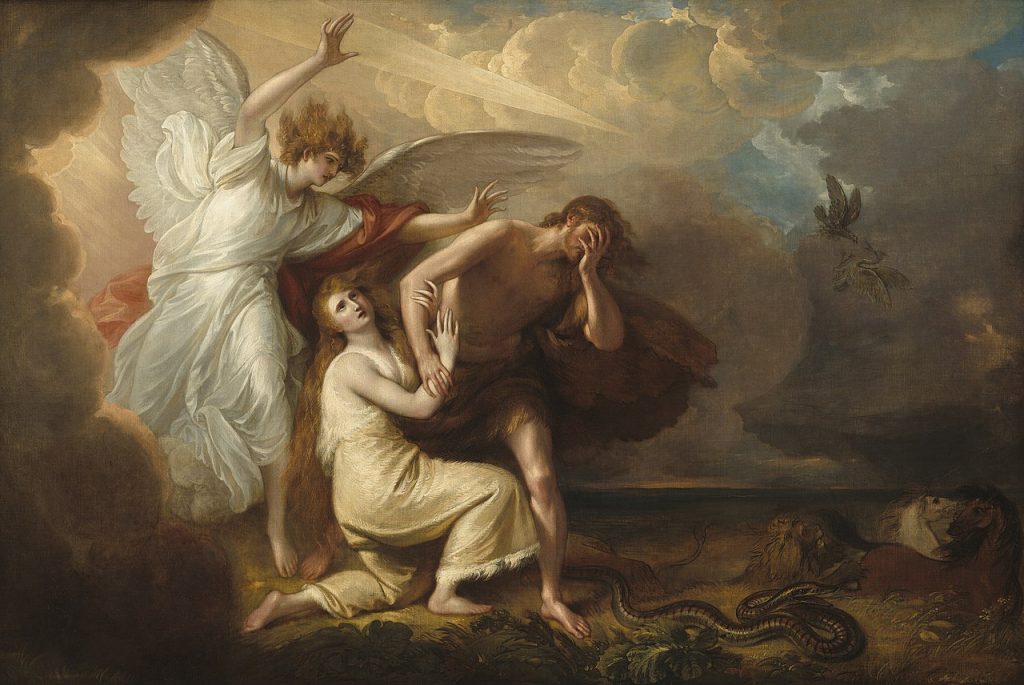The Bible tells a love story. Scriptures begin and end with a wedding. In Genesis, God fashions man and woman, Adam and Eve, and the two become one flesh (Genesis 2:23–24). At the other end of the Bible, in the Book of Revelation, St. John sees heaven as “the marriage supper of the Lamb” (Revelation 19:9) — the celebration of the communion of Christ and his Church.
In between those two weddings, the love story unfolds. For Adam and Eve, marital bliss was short-lived. The deadly serpent tempted them to disobey God; and immediately afterward they began to blame each other for the punishment that followed.
They left the human family a legacy of dysfunction that cascaded down the generations — and the sign of this dysfunction is marital and sexual disarray. Eventually, the greatest sin of Israel’s greatest king (David) would begin with adultery. Later, Solomon’s polygamy would lead him to idolatry, as Abraham’s practice of concubinage had led to horrific strife.
Still, marriage remained a great (though wounded) good. And it remained God’s favorite metaphor for his love for humankind. He cast his relationship with man in terms of covenant — a sacred bond of kinship sealed by a solemn oath. In the ancient world, covenant was the bond that formed families. Marriage was the most common form of covenant.
A covenant is fundamentally different from a contract. In contracts, terms are negotiable; in covenants, they’re not. God sets the terms of the covenant.
Contracts are normally based on profit; covenants are based on love. The former speaks to self-interest, while the latter calls to self-sacrifice.
Contracts exchange goods and services; covenants exchange persons. Contracts can be broken. A covenant is unconditional and ongoing; while it can be violated, it cannot be dissolved.
The differences show us that God’s covenantal relationship with humankind is non-negotiable, but freely accepted; that it is based on love; that it involves a sharing of our very lives — and his very life; that it is unlimited in scope. And that it is forever. In all of this, the divine covenant is very much like a marriage.
When God spoke through the prophets, he taught Israel always to hope and strive for the renewal of his covenant. And, again, he portrayed the covenant as a marriage. He spoke of himself or his Messiah coming as a bridegroom to take his people as his bride (see Hosea 2:16–24; Jeremiah 2:2; Isaiah 54:4–8).
The prophets heralded a new and everlasting covenant, which would be a renewal of the original covenant between God and Adam, God and humankind, God and all creation. It would, in fact, be so all-encompassing as to be a “new creation.”
The imagery of the prophets, which was employed in turn by Jesus Christ, was the imagery of betrothal and marriage. Thus, when Jesus came, he called himself the “bridegroom,” and those who were united to him in baptism were called “espoused” (see John 3:29; Mark 2:19; etc.).
It is Jesus, in fact, who gave us the first explicitly marital interpretation of Genesis. The word “marriage,” after all, had not appeared in the story of Adam and Eve. Yet we know the story is about marriage because Jesus said it was (see Mark 10:2–16). Jesus said that the Genesis story reflects God’s will “from the beginning of creation,” and that “what God has joined together, no human being must separate.”
St. Paul, in his Letter to the Ephesians, quotes the Genesis text and explains that this marriage covenant in the garden is a reference to the covenant between “Christ and the Church” (see Ephesians 5:21–33). He helps us see why Adam failed: Adam did not “give himself up” for his bride as he should have. Christ, however, does “give himself up” for his bride, the Church. Where the first Adam failed, with dire consequences, the new Adam succeeded, with salvific power.
The mystery receives its most powerful expression in the Book of Revelation, whose Greek title literally means “unveiling.” Like the story of Adam and Eve, the apocalypse evokes nuptial images.
That which is veiled is holy, to be unveiled only in covenant love. What the apocalypse “unveils” is history’s final consummation, the marriage of Christ to his bride, the Church (see Revelation 19:9; 21:9; 22:17). And what else? A new creation — a new heaven and a new earth (Revelation 21:1). It is a reprise of the opening chapters of Genesis.
June is a month of many weddings, and in each of these such glories are signified. Praise God for the sacrament!

